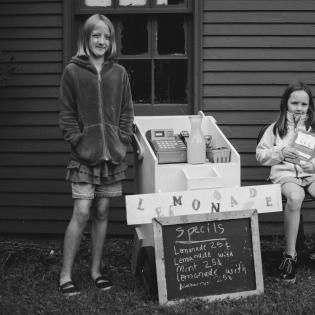Who's Going to Help?
Now that the need they want to address is identified, the children meet people in the community who address the need and others who may want to help them with their fundraiser.
Ask questions of a local nonprofit organization that addresses the need they identified in the previous lesson
Request support from local businesses or individuals for needed items, financial support, or information
- copy of family letter "Lemonade Sale" (see handout below)
Arrange to visit or ask questions by video conference to learn about a local nonprofit organization that addresses the need they identified in the previous lesson
Send home a letter to families informing them of the sale and the scheduled trip to a local nonprofit. The handout should be used as an example only. Dates and information will need to be changed to meet circumstances. (See handout below: Lemonade Sale).
Instructions
Anticipatory Set:
To involve the children in the motivation to address the need they identified in the previous lesson, share some facts about the need and how it is being addressed and how their fundraiser can make a difference.
If a visit or teleconference call is arranged, tell them they will have a chance to learn about the work of a local related nonprofit (like a food pantry or a nature center). Make a plan together of what questions they want to ask about the need, their work, how big of a problem it is locally and nationally, and so on.
When the time arrives, allow the children to ask most of the questions and listen to the expert. After the visit, they can talk about what the money they raise will be able to do. (Maybe they can volunteer time or donate other supplies.)
Brainstorm a list of needed items for the lemonade stand. Help them come up with things like cups, lemons, ice, and sugar. You may want to have a recipe idea in mind that you will use for the sale. They will also need tables, napkins, change box, sanitzing wipes, and trash cans.
As a bonus, you may invite a guest from a local restaurant share their recipe for lemonade.
Talk about ways they can gather the needed items. For example, some local companies like to give or donate things to meet a community need. Maybe they could request of local stores to donate the cups and food items. Ask the children for ideas of places to ask.
Come up with a script to give children support to make a call for donations. They can practice in pairs.
Note: you may wish to call the vendors ahead of time to make them aware of the pending phone call. (This is a good opportunity to use family volunteers to aid the children in making the calls.)
The phone conversation could go as follows:
"Hi! My name is ______________. I’m calling from _______________Elementary School. My class is going to have a lemonade sale to help raise money for ____________. We need __________ for our sale. Would you be willing to donate _______________? Thanks for your help!"
Involve the children in writing thank you notes for any donations they receive from the community. They can be given to the merchants when the donated items are picked up.
Handouts
Philanthropy Framework
-
Strand PHIL.IV Volunteering and Service
-
Standard VS 03. Providing Service
-
Benchmark E.3 Describe the task and the student role.
-
Benchmark E.4 Demonstrate the skills needed for the successful performance of the volunteer job.
-
-
